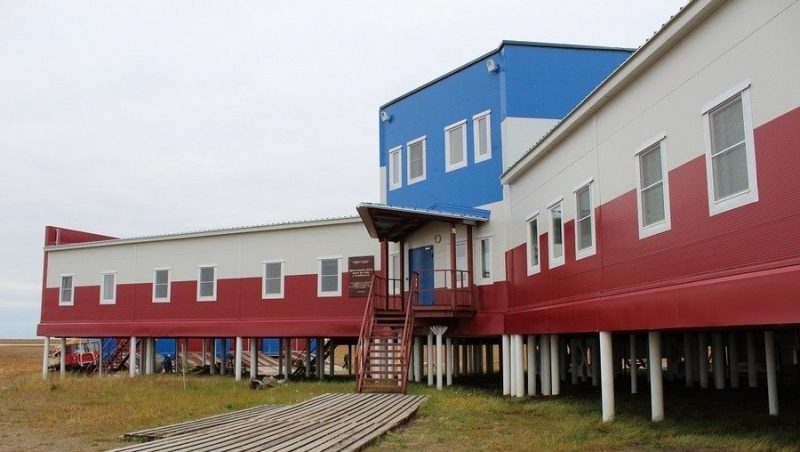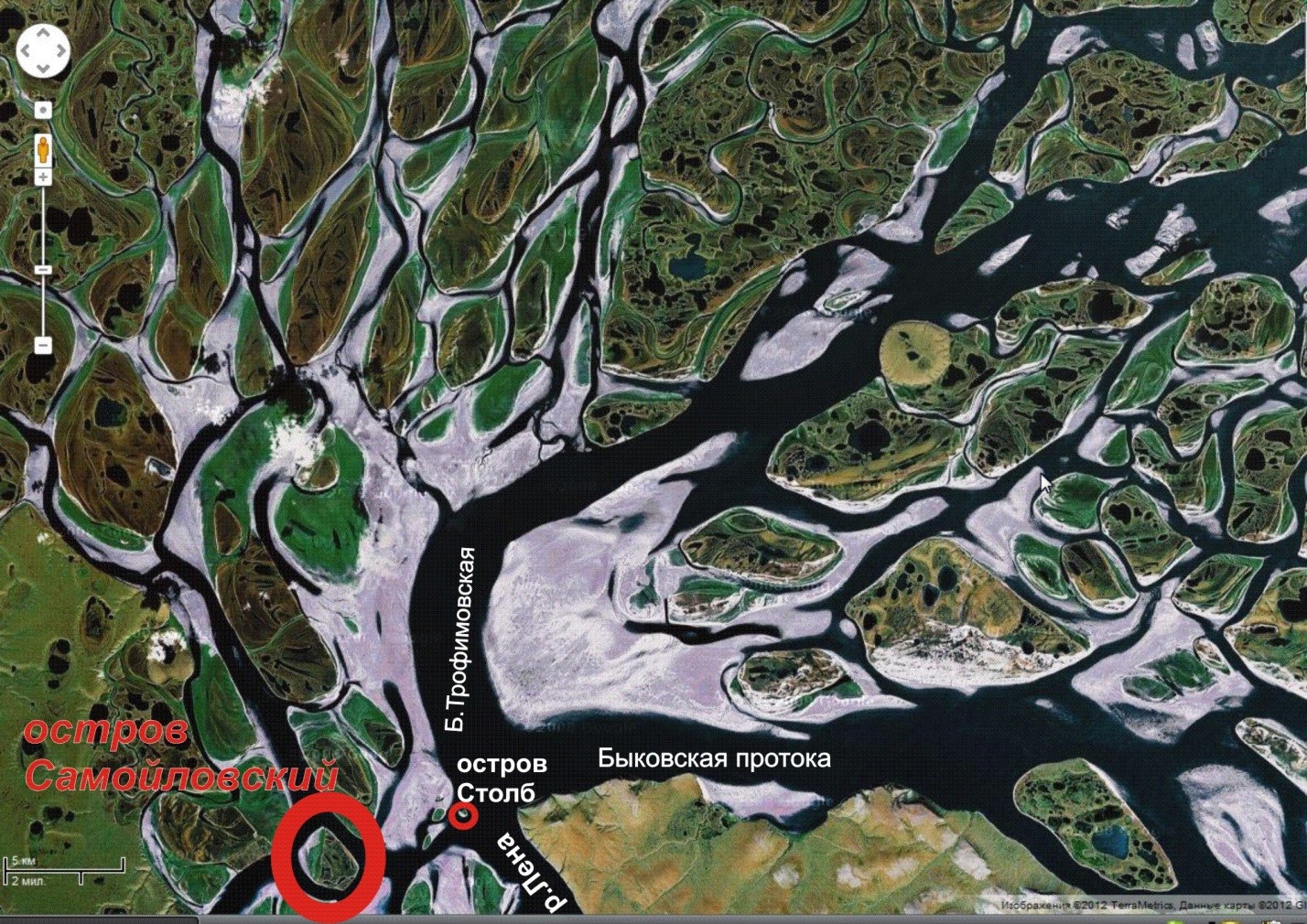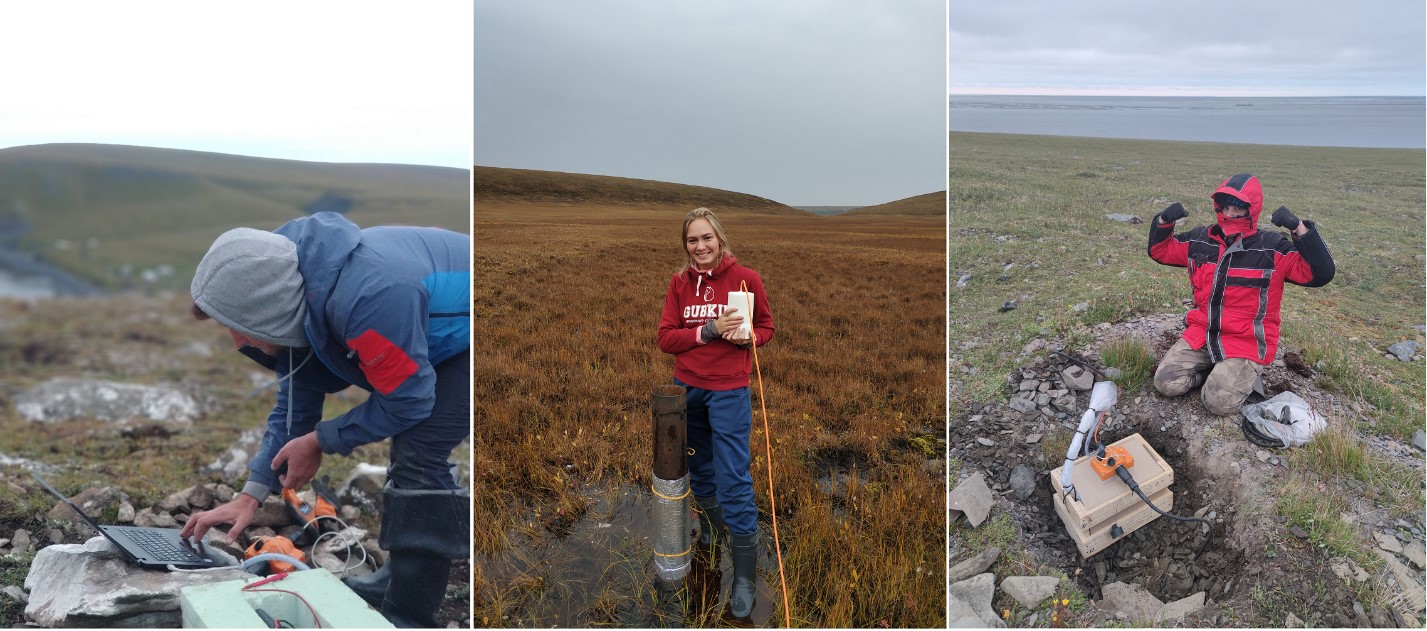The Samoylov Island Research Station (and site) which is owned and run by the Trofimuk Institute of Geology and Geophysics, Siberian Branch of the Russian Academy of Sciences is located at the southern coast of Samoylov Island in the southern portion of the Lena River Delta, Northeast Siberia, close to the Laptev Sea (72°22’ N, 126°29’ E).
Facts to Know (through the eyes of a foreign partner, the Alfred Wegener Institute)
https://www.awi.de/en/expedition/stations/island-samoylov.htmlSince 1998, a partnership with Russian scientific institutes has opened the door to fieldwork in the Siberian tundra. Up until mid 2013, AWI researchers and their Russian colleagues still did so at an old research base on Samoylov Island with the rustic charm of a remote summer camp.
Since 2013, the island has been home to a modern research base operated by the Trofimuk Institute of Petroleum Geology and Geophysics, Siberian Branch, Russian Academy of Sciences. Whereas before, the researchers could only work in Siberia in the summer, the cutting-edge station now allows them to pursue their research year-round.
The new station is chiefly used by the Russian-German LENA research expeditions, which continue from spring to autumn every year. These trips are primarily organized by three institutes: the Alfred Wegener Institute, the Arctic and Antarctic Research Institute (St. Petersburg) and the Melnikov Permafrost Institute (Yakutsk).
The region is crucial to understanding the processes at work in the permafrost of the Siberian Arctic, making it a natural magnet for the AWI’s researchers.
The station can host up to 20 scientists. They conduct long-term landscape experiments and data collection at the station. To aid them in their work, they can draw on extensive datasets produced by automated measuring stations since 1998. In addition to processes affecting the permafrost, the conversion and emission of greenhouse gases are key research areas. Further, the researchers are investigating e.g. the effects of altered thawing processes on the landscapes of the Lena Delta. The researchers’ endeavours at Samoylov Island Research Station will help to estimate the effects of future climate changes on the Arctic ecosystem.
The new stage of development
The Trofimuk Institute of Petroleum Geology and Geophysics SB RAS has presented the 2023-2027 development program for the Samoylov Island Research Station as an international center for integrated Arctic research.
This program envisages a large-scale upgrade of the station which has served an effective and cutting-edge scientific outpost in the Lena River Delta (Yakutia) during the past decade. Thus, the coming years promise to be extremely busy for the Samoylov Island RS.

The Samoylov Island Research Station
The concerns facing the Research Station
The research conducted at the Samoylov Island encompasses such focus areas as: permafrost studies and operational permafrost monitoring; Quaternary geology and complex geophysical investigations; quantification of greenhouse gas fluxes and climate research; geoecology; soil science; hydrology and geochemistry.
The research conducted in the Lena Delta involve seismological studies, shallow-depth seismic exploration and electrotomography; geobotany, thermometry and geochemistry; stratigraphy and paleontology. These works is a continuation of previous projects that greatly add to our understanding of the Arctic ecosystem. The results obtained at Samoylov RS traditionally arouse considerable interest among scientists around the world.
Current and future development of the Samoylov Island RS\n
The Institute (IPGG) has offered several measures for maintenance and further development of the research station. Scientists articulate their concern about research conducted only during summer periods, which does not allow them from to fully utilize the potential of a year-round operating station. Moreover, year-round measurements will require setting up a test site for permafrost carbon research and a magnetic observatory. The latter will enable aerial imaging magnetic measurements, electrical resistivity tomography electromagnetic imaging, thermal monitoring, etc., as well as unique studies of the north magnetic pole of the Earth which is now shifting towards the Arctic coast of Russia.
A.A. Duchkov, Ph.D (phys.-math), deputy director of IPGG says that the development plan also includes applied research in renewable energy, materials science and geotechnical monitoring in the Arctic using the Samoylov Island RS as a base.
Setting up a geomagnetic observatory requires carrying out refurbishment works and building new pavilions. The research station will also need new specialized equipment and vehicles. These will expand the scope of research conducted in the Lena Delta. The first steps to implement the Samoylov Island Research Station development program have already been taken.
The Institute received a ₽ 55 mln grant-in-aid for purchase of fuel for maintaining logistic operations of the Samoylov Island Research Station, which also allows it to have fuel and lubricant stores required for stable operations of the research station in the nearest future. Also, the Ministry of Science and Higher Education of the Russian Federation has allocated a ₽ 55 mln grant to replace diesel generators with newer, less polluting models, at the research station.

Geographic location of the Samoylov Island research site
Scientific partnerships
Another major task for the nearest years is to expand scientific collaboration. The Trofimuk Institute of Petroleum Geology and Geophysics (IPGG SB RAS) is currently partnering through the Samoilov Island RS with as many as 14 institutions, including Novosibirsk State University, Moscow State University and St. Petersburg State University, Kurchatov Institute, a multi-disciplinary research center, and other research institutions, as well as a number of leading institutes from the Siberian Branch of the Russian Academy of Sciences. This, however, is by far not the limit. The most recent trends of the Samoylov RS development largely qualifies as a "turn to the East" – the new format of the international expedition has already been discussed with Chinese colleagues from the Institute of Tibetan Plateau Research (ITP) of the Chinese Academy of Sciences.
V.N. Glinskikh, RAS Corr. Member, the IPGG SB RAS Director noted that it is only natural that because of its geographical location, the Samoylov Island RS area has been made an Arctic permafrost research site allowing investigating the processes (biological, hydrological, thermal, biogeochemical etc.) that operate within this layer, and that it would be logical to enhance participation of the Yakut Scientific Center SB RAS in activities of the Samoylov research station.
The prospects for development of the research station were discussed at the meeting of the Scientific and Expert Council Presidium of the Russian State Commission for Arctic Development held in September 2023 within the frames of the 8th Eastern Economic Forum (Vladivostok), as well as at the “2nd Laverov’s Readings on Arctic: relevant issues and challenges” a Russian conference with international participation (November 13–17, 2023, Arkhangelsk).

Installation of seismic array by the IPGG staff.
Published by the IPGG Press Service
Photo from the IPGG archival photographsН